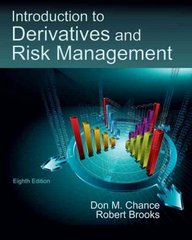Question
2) Peter has just turned 45 years old. He is interested in getting life insurance. He figures that he will need the insurance until he
2) Peter has just turned 45 years old. He is interested in getting life insurance. He figures that he will need the insurance until he is 65 years old, at which point he will retire [i.e., he will retire on the day he turns 65.]. He currently earns $90,000 a year (before-tax) from his work (to be paid at the end of the year). He expects his salary to increase at the rate of 1% per year during the next 20 years. Assume that the salary is paid at the end of the year, and that his average tax rate is 25%.
Peter's subsistent consumption is estimated to be $12,000 per year (increasing at the rate of 1% per year), and he expects to live until 85 years old. The after-tax valuation rate is 3% p.a., annual compounding.
(a) (2 points) What should be the amount of coverage for his life insurance under the human-capital approach?
(b) (3 points) Using the mortality tables that we discussed in class (see the last page of Note #8), calculate the annual premium that he has to pay under a 20-year term-life policy. Note that the premium will be constant from year to year during the 20-year term.
(c) (3 points) Suppose that instead of getting a 20-year term policy, Peter wants to get a 10-year policy (with the same amount of coverage as in (a)), and 10 years from now (i.e., when he turns 55) he will renew it for another 10 years (with the same amount of coverage). The insurance company will allow him to renew his policy without a medical test. Assume that the interest rate, the inflation rate and the mortality probability remain the same throughout the next 20 years. What are the total premiums (PV'ed back to today) that he has to pay under this alternative?
Step by Step Solution
There are 3 Steps involved in it
Step: 1

Get Instant Access to Expert-Tailored Solutions
See step-by-step solutions with expert insights and AI powered tools for academic success
Step: 2

Step: 3

Ace Your Homework with AI
Get the answers you need in no time with our AI-driven, step-by-step assistance
Get Started


